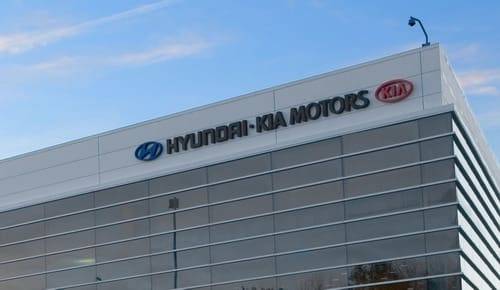Hyundai, Kia Mileage Mishap: How It Happened


Hyundai-Kia’s Sung Hwan Cho told reporters this morning that it’s “a very complex testing process.” Cho heads the automaker’s U.S. technical centers. He shed some light on the EPA tests, which lead to the city and highway fuel-economy figures on a new-car window sticker. A key part of the tests involve measuring the resistance of various systems, dubbed the “road load” by engineers: how a car’s tires meet the pavement, how the vehicle’s shape cuts through the air and how the drivetrain’s moving parts work in tandem. Each area translates to fuel efficiency, or lack thereof.
“There are hundreds of different parameters that can affect this road load,” Cho said. “Ambient temperature, wind speeds, atmospheric pressure.”
Then there’s a litany of variations within each test vehicle — how many miles are on it, the condition of the drivetrain, the tire wear. Finally, the test procedures themselves involve “which kind of regulation and guidance procedures you follow, and how you process the data, and how you calibrate your measurements,” he said.
Somewhere in those variations, Hyundai-Kia went askew of EPA guidance. But exactly how much guidance exists is up in the air.
Room for Interpretation?
“We added a few more stops and processes, which is different from what the EPA recommended,” Cho said. The EPA process is rigid, “but there are also some points where we need some interpretation.”
“This test is extremely complicated and delicate and sensitive,” he said. “We have been introducing many different models of vehicles to the market over the past three or four years, so we need to handle various types of models within limited amounts of time. So that’s made us improve the efficiency of the test itself — how you efficiently make the test and generate the results. By doing that … we added a little [sic] more steps.”
An example: Hyundai-Kia used a test track instead of simulated public roads to break in its tires before testing, Cho said. That reflected inaccurate road resistance, the Detroit News reports. Hyundai-Kia changed its test procedures to reflect these calibrations in 2010, but the EPA’s Ann Arbor, Mich., National Vehicle and Fuel Emission Laboratory observed discrepancies early this year. That led the agency to investigate. Not long after, a consumer watchdog group pressed claims that the automaker’s Elantra sedan didn’t get anywhere near its 40 mpg EPA highway rating.
By fall, the EPA had hinted at additional measures.
“We are meeting with [automakers] and testing vehicles to confirm that across the industry the road-load estimates provided to the agency are accurate and consistent,” the EPA’s Office of Transportation and Air Quality stated in a presentation at September’s International Environmentally Friendly Vehicle Conference. The EPA surveys vehicles between 20,000 and 90,000 miles, but automakers perform compliance testing at various points throughout a 120,000-mile lifecycle.
“Nobody is trying to con anyone,” Andrew Smart, director of industry relations at the Society of Automotive Engineers, told Cars.com. “What you’re trying to do as engineers is [create] repeatability … If there are any subtle differences in vehicle configuration, it’s those that are measured and not the driving conditions of the track.”
Closing the Gap
It remains to be seen how the EPA will address the gap in testing standards, or if it’ll simply audit more cars. The agency currently audits about 15% of car models in a given year. Two EPA spokespeople did not immediately return requests for comment, but steps will be taken if the agency’s record is any indication.
“Manufacturers expect regulatory agencies to implement and enforce their programs in a way that ensures a fair and level playing field for all participants,” according to the EPA’s September presentation. “If a competitor evades an emissions regulation, they will not only realize a cost savings, but they will likely be able to offer product at a price point that gains sales that should have gone to other parties in the market.”
The presentation noted that the EPA should ensure that manufacturers don’t “defeat or circumvent regulations through elements of design or control.”
The EPA could impose civil penalties on Hyundai-Kia, the Detroit News said; Hyundai Motor America President John Krafcik told the newspaper the automaker will fully cooperate. But SAE’s Smart maintains the automaker wasn’t willfully negligent.
“I think in this occasion, very clearly, they never tried to mislead people” Smart said. “There will be an internal review of what happened. … What will happen is more data will be required, more definition will be required. It all comes down to more.”
In the meantime, the rest of the industry — particularly carmakers with sky-high EPA ratings — will take notice. Hyundai’s travails could result in higher oversight for mileage ratings not just from the EPA, but from within the industry.
Automakers “don’t want to be affected by this, and therefore they will pay very, very close attention,” Smart said. “This will be a wake-up call for other people that you cannot be complacent. … The [automakers] are very cognizant of what’s being said out there of their own product.”
Related
Hyundai, Kia to Pay 900,000 Owners for Bad MPG Estimates
What to Do If You Own an Affected Hyundai, Kia
Cars.com’s Mileage Tests of Hyundai and Kia Vehicles in Line With EPA Results

Former Assistant Managing Editor-News Kelsey Mays likes quality, reliability, safety and practicality. But he also likes a fair price.
Featured stories



